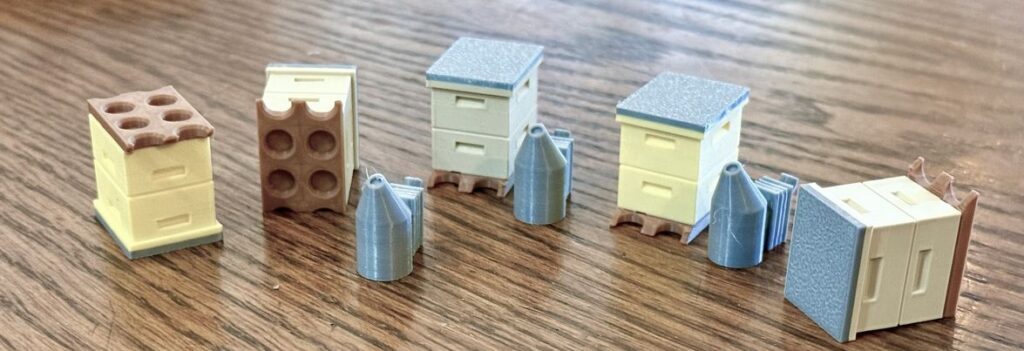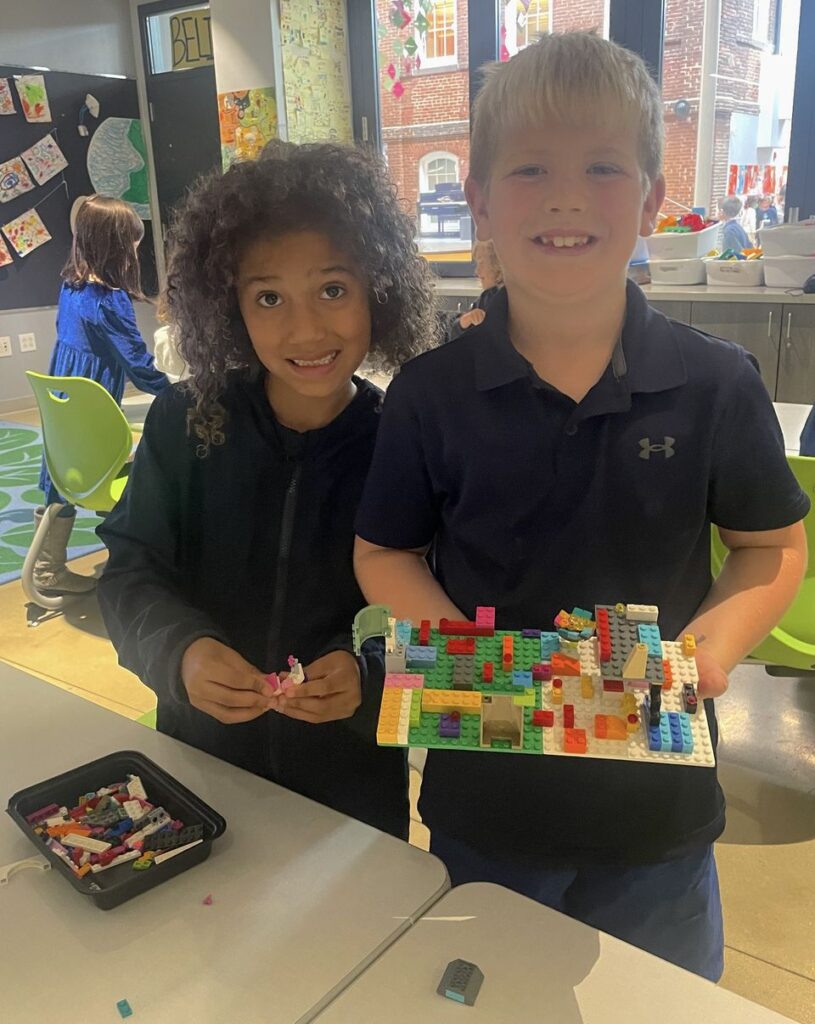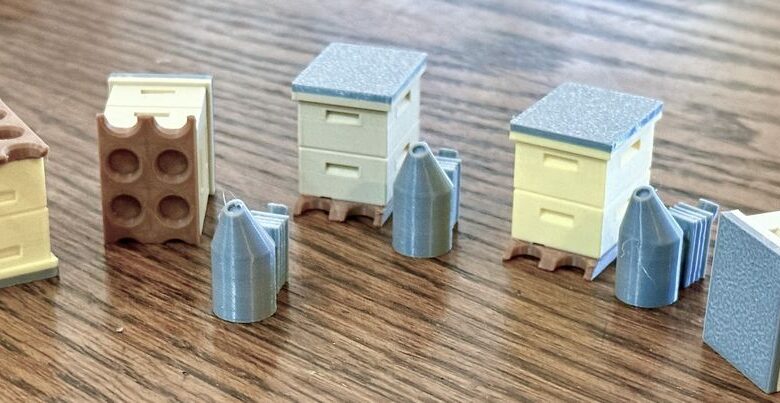
With huge thanks to Matt Gagle of Aperture Apiaries, the kids in my elementary school beekeeping education classes now have a Lego-compatible Langstroth hive (see photo!) to add to their snap-together polyculture farms! Matt is a skilled 3D printer of wonderful educational (and other) items, including some that have been discussed in earlier BeeLine newsletters. Earlier this fall, I talked to him about this activity, and within a few days he had something that beat anything I could find in a Lego store or online! And both I and my students are grateful.
If you want to give them a try, the Lego-compatible (NOT Lego) hives are for sale from Matt on his website at https://apertureapiary.com/products/lego-compatible-langstroth-hive-and-smoker.
When teaching about science, and especially pollination and bees, it really helps kids to be able to look at, handle, and put stuff together (and take it apart, and smoosh it, and break it sometimes, and then look at the pieces with a magnifying glass...) A consistant hero in our beekeeping community, Matt Gagle, has helped me make one of the more complex lessons easier to understand and more rewarding!
Pollination, and by extension, its perpetrators–pollinators–are part of national Next Generation Science Standards for the second grade. For that reason, I have been offering a 10-part beekeeping unit in the science classroom at the school around the corner from me for about ten years. After we take flowers apart, look at dead bees, make candles, talk about bee vision, and compare hornet nests and honeycomb, we have a bummer of a class, "Are Bees in Trouble?"
We look at the usual pests and diseases, but also habitat loss and the way in which we do food production in a way that people can afford to eat. We teach about monoculture and polyculture, and how the former is how more food is produced more affordably. We really have to work to understand that it usually requires more chemical interventions in the absence of a natural balance in the fields.
That's why, after the lecture-and-slides part of the class, we hand out bowls of Legos and a green baseplate about 10"x10", and ask them to imagine a polycultural farm. What should they plant? Where will they put things like water which the plants will need? The kids are invited to work together, making bigger farms if they want to.

In this picture, the boys have placed solar panels and some roof plantings on a structure to the right, under which the tractor can park.
The kids have often tried to put beehives on their farms, but my kits only have simple white rectangles. These are about as realistic as the grape vines and orange trees that they imagine other blocks to be, I guess. Lego does make a "beehive," but it is a skep, and not a good looking one. (An aside, Lego has started making all sorts of floral blocks that really light up a farm!)
In class, they have already been able to explore inside a Lang hive, so I always really wished I could give them something to reflect that. So I whined to poor Matt Gagle about it! And he came through. My next scheduled "Are Bees In Trouble?" class is in early January, and I would welcome anyone interested in seeing all this in action. I am also happy to share my curriculum and slides (and my extensive Lego holdings).
Please note: the "beehives" that he contributed ARE NOT Legos, and are not for sale (Lego vigorously defends its intellectual property, and neither Matt nor I are looking for trouble). But I wanted you to know that they are possible!
For what it is worth, as the kids work together to build these farms, my partner teacher and I walk around the tables, asking kids what crop each color of block represents to them, whether they think bees pollinate it, and whether the bees are able to see the color that they have chosen very well. Sometimes we ask them if they are building a farm nearby, or some other climate (many children include bananas and mangoes, which is another way to provoke discussion!)
For kids who can only absorb so much talking at once, or who need a different set of senses or experiences to piece things together, or who learn better discussing something with a friend, this activity glues together weeks of talks very close to the end of our sessions together. I am so happy that Matt has helped me keep the bees very much present in this learning!

